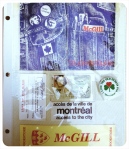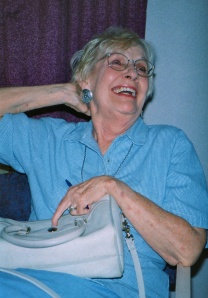 Over at the always illuminating Feminist Spectator, my pal Jill Dolan has already published the definitive lesbian feminist review of the new musical adaptation of Alison Bechdel‘s 2006 graphic novel Fun Home, currently playing at New York’s Public Theater. (Playwright Lisa Kron and composer Jeanine Tesori did the adaptation. Get a little info on the show here and a short musical montage here. The show’s run has been extended through December 1. Read this, and then go get yourself some tickets. Has the Madwoman ever steered you wrong?)
Over at the always illuminating Feminist Spectator, my pal Jill Dolan has already published the definitive lesbian feminist review of the new musical adaptation of Alison Bechdel‘s 2006 graphic novel Fun Home, currently playing at New York’s Public Theater. (Playwright Lisa Kron and composer Jeanine Tesori did the adaptation. Get a little info on the show here and a short musical montage here. The show’s run has been extended through December 1. Read this, and then go get yourself some tickets. Has the Madwoman ever steered you wrong?)
I defer to Jill’s expert judgment on the brilliance of the show and the excellence of the cast. (Ben Brantley also gave it a rave review in the New York Times.) What I’d like to do here is justify the day of my life I devoted to training up to New York to see the show by riffing some on a comment Jill makes at the end of her review:
I left the theatre . . . feeling strangely seen and not quite sure how to think about that; I’ve spent so many years watching for lesbian subtext and trying to read queerness underneath protestations of heterosexuality. To see lesbian desire as the text felt almost startling — and more wonderful than I can even begin to describe.
My experience and sentiments exactly. I went to see the play alone, the Woman Formerly Known as Goose being occupied, as she often has been lately, with research and other shenanigans having to do with an obscure nineteenth-century poetess. No disrespect to WFKG, but I quite enjoyed my solitary Muppet Takes Manhattan adventure — the long, early morning train ride when a strong and steady internet connection helped me motor through a huge backlog of grading, the spontaneous stop at the “Queer History of Fashion” exhibit at the Fashion Institute of Technology Museum, the pre-matinee brunch at a sunny Italian place in the Village. Most especially, though, I was content to be alone when the lights went down and Fun Home began its 90-minute meditation on the love, ambivalence, and haunting uncertainty of a queer daughter’s relationship to her gay, deceased father. By “alone,” of course, I mean that I was in a theater full of strangers and didn’t have to worry about whether the sweet Asian guy to my left or the stocky dyke to my right were enjoying the play. I could give myself over entirely to what was happening on stage, where, as Dolan suggests, the action was mesmerizing and remarkable and painful and strangely interpellating.
Like the novel, the play is retrospective and delightfully meta. The narrator is Alison at 43, a lesbian cartoonist struggling to sort out her family history and the mystery of her father’s life and death. Played with ease and authority by Beth Malone (who bears an uncanny resemblance to the real Alison Bechdel), Alison is on stage and at her writing table throughout the play, stepping away from the table to observe and comment on scenes from her earlier life and to join occasionally in the singing. She watches herself, and we watch her working on the book that will become the play we are watching. Two other actresses play Alison at earlier ages, and their performances are spectacular: Sydney Lucas plays her as a precocious gender-bending child; Alexandra Socha plays her as a charmingly confused college student who steals the show with a belted-out ballad of lesbian first love called “Changing My Major” (to Joan, the name of the first girlfriend, winningly played by Roberta Colindrez). (Speaking of adventures in meta-ness, the New Yorker‘s Michael Schulman has a nifty little note up on watching Stephen Sondheim watch Fun Home. [Literally: Schulman sat directly behind Sondheim at a performance.] It muses on Sondheim’s “pervasive influence on the genre” of the musical and on this one in particular, in part by detecting the echoes of several Sondheim songs in “Changing My Major.” It’s a smart piece that ends by wondering if Sondheim, who, “in his decades of work, . . . has never wrestled explicitly with his sexuality or his upbringing,” wasn’t, at Fun Home, “watching the one show that he could never write.”)
Okay, back to Jill’s “feeling strangely seen” by the play and the alluring frisson, for the dyke spectator, of seeing a play in which lesbian desire is the text rather than the subtext or a wild fantasy born of some powerful (dis)identificatory need. Yes, darlings, I, too, squandered hours on the couch in the 80s desperately seeking the lesbian subtext of Cagney & Lacey. Meanwhile, WFKG had a thing for Clair Huxtable, which I didn’t mind because it meant I could have Kate & Allie all to myself. As well, you know, as the early Jodie Foster. To find pleasure in looking at most mainstream cultural texts, dyke (like queer and feminist) spectators can’t mindlessly surrender themselves to the fantasy structures of stories that assume and cater to heterosexual male desires. We must be willfully resistant readers, taking what we can or what we want from texts that ignore or despise us. We become skilled in remaking even the most toxic representations, recycling damaged stereotypes so that they become what José Esteban Muñoz calls “powerful and seductive sites of self-creation” (Disidentifications 4). Such resistance and revision become habitual, reflexive. They are, as Muñoz claims, “survival strategies” that minority subjects practice “in order to negotiate a phobic majoritarian public sphere.”
So it is hardly surprising that, despite The L Word, Ellen, and Orange Is the New Black, the dyke spectator (particularly if she is white, middle class, and of a certain age) might still find it strange to feel truly seen by a play — to feel, in other words, that her own experiences and desires are on every level (content, form, and fantasy structure) reflected back to her in what she sees on the stage. It is, as Jill implies, an intensely pleasurable experience, but it may also, after decades of wrestling with and against texts, be slightly unhinging to feel that one is invited into the cozy spaces of this fun yet fraught and complex home. I know that I felt unhinged, sitting in the darkness, as college-age Alison sang with lascivious gusto of her desire to change her major to Joan before shifting abruptly to consider the turn her life has suddenly taken:
I don’t know who I am.
I’ve become someone new.
Nothing I just did
Is anything I would do.
Overnight everything changed. I am not prepared.
I’m dizzy, I’m nauseous, I’m shaky, I’m scared.
Love and sex are giddily transforming and terrifying experiences, even, I’m told, when the norms of heteropatriarchy aren’t in any way violated. Still, it has always taken considerable effort and ingenuity for me to believe that Fraulein Maria and Captain von Trappe were singing about me as they confess their love for one another in The Sound of Music‘s “I Must Have Done Something Good.” (WFKG shared so fully in my creative appropriation of this song that it was performed as the processional at our commitment ceremony in 1989. Which proves beyond the shadow of a doubt that we were queer before queer was here, don’t you agree?) At Fun Home, I didn’t have to fight the text or mock it or translate it or lovingly subvert it. I just sat there, in awe, reveling in yet also feeling overwhelmed by the pleasures of identification. “Majoring in Joan” made me cry because it so viscerally recalled for me a similar night of my own college life so many years ago. A friend who saw the show the night before I did said she cried through most of the second half of the play and was surprised because she didn’t react so intensely to the experience of reading the book. There is something, I think, about seeing such a story brought to life on the stage, something about the intimacy and proximity of the performers to oneself, even across the dark space of a theater. There is also something about seeing the multiple time frames of this particular story dramatized simultaneously, as when, in the photo above, the three Alisons are on stage together for the show’s final song, the beautiful “Flying Away.” The song recalls the daughter’s childhood love of playing “Airplane” with her father, which is evoked in the illustration from the book version of Fun Home projected on a screen at the rear of the stage as the play concludes. That is the only time an image from the book appears in the play. In this moment, the play’s queer temporality is gorgeously realized. Desire makes all time present, brings all our selves — past and present, living and dead, printed and performed — to us. It is a fitting, generous, not overly sentimental ending — and it left me feeling shattered. In a good way.
I left the theater eager for company, ready to end the solitary part of my long day. I was glad I had plans to meet friends for dinner and was thrilled that the friends were queer art and culture geeks who would be eager to talk with me about the play. They were, we did, and this post is what that dreamy yet solid queer conviviality helped to produce. I loved Fun Home, and I needed the ache it gave me. Recognition, it turns out, can hurt as much as misrecognition. I’m grateful to have had the occasion to learn that lesson after more than half a century of spectatorship. I raise a more than half full glass to the marvelous looking-glass of Fun Home in all its incarnations. Long may it run.










